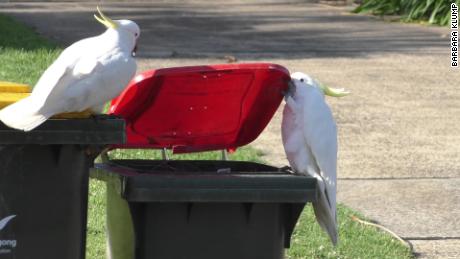Why trash-raiding parrots in Sydney are smarter than ‘bin chickens’

He shared it with Barbara Klump and Lucy Aplin, both researchers at the Max Planck Institute of Animal Behavior in Germany — and they were immediately fascinated.”It was so exciting to observe such an ingenious and innovative way to access a food resource, we knew immediately that we had to systematically study this unique foraging behavior,” said Klump, a postdoctoral research fellow at the institute in a news release.It’s a five-stage process for the birds to open the bin lid, according to the study. The bird has to pry open the lid with its beak, twist its neck sideways and hop onto to the edge of the bin, hold it open with its beak or foot, walk along the rim, and finally flip the lid open.On Thursday, the scientists published their findings “There are different ways to go about (opening the lids),” said Major. The fact that groups have developed different ways to do it was “evidence they learned the behavior from each other, rather than them solving the puzzle independently.”It may seem like a trivial finding — that birds can open lids differently — but it’s significant because it proves animals can learn, share and develop subcultures, Major said. He compared it to human dance, how each culture has their own, and how places that are geographically close may have more similar dance styles than in countries far away.The study also sheds more light on how animals are evolving in urban centers. There are always “winners and losers” as cities expand and land use changes, Major said — and the animals who can can adapt to new environments emerge as the winners. There are plenty of other species who forage — most notably, the larger ibis, known as the “bin chicken,” that digs through the city’s trash. But “it’s easy for an ibis to see food in a bin, and get food out of it,” said Major. “For a cockatoo to lift a bin to find food, that’s another level of puzzle solving.””Cockatoos are broadening out their diet, so they’re able to exploit opportunities in an urban environment,” he added. “I hope our research will help us learn to live with them as well as they’re learning to live with us.”


